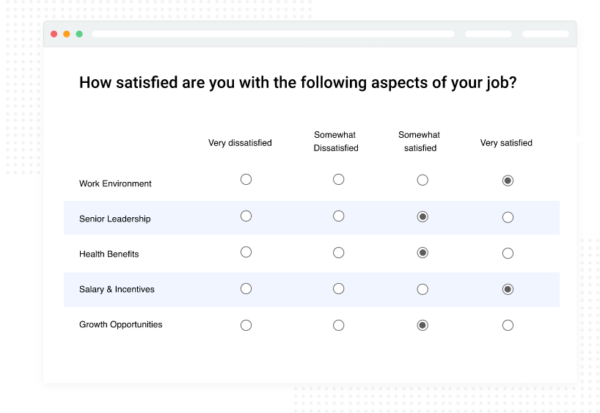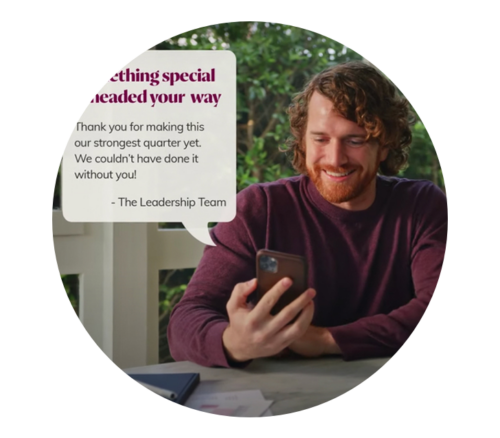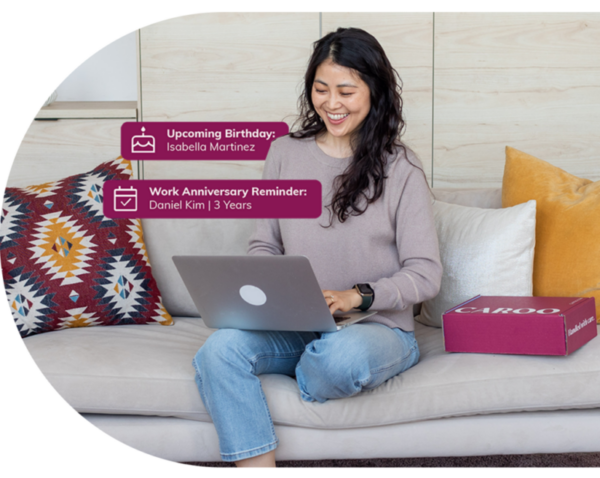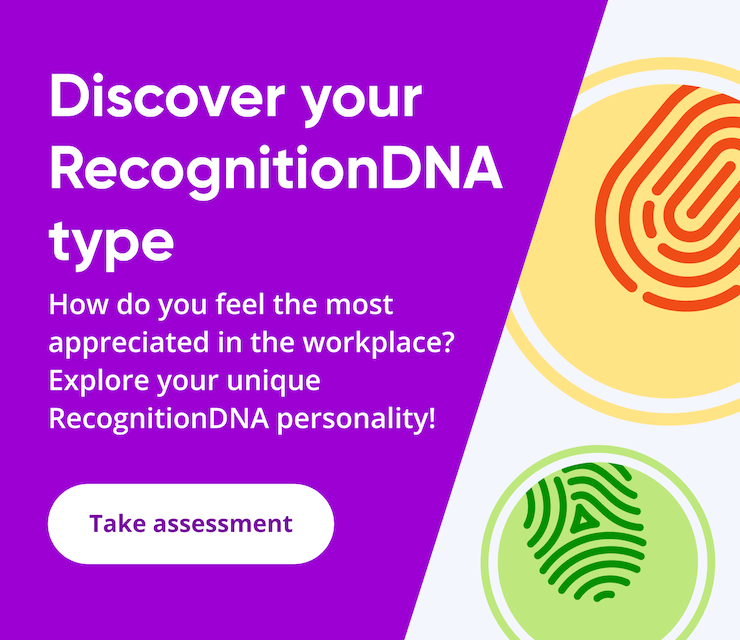Remember when employee recognition was synonymous with a pat on the back or an employee of the month plaque on display in the break room?
Those days are now far in the rearview mirror.
Thanks to the rise of the era of employee care, employee recognition is more multifaceted and important than ever before. The simple fact is that employees expect more than just a paycheck and a Holiday bonus.
They expect to receive frequent, varied, personalized, and meaningful recognition throughout their time at a company. Fortunately, we have some awesome best practices for employee recognition that will help you create a recognition program that delivers just that and more!
Before we dive into those best practices, let’s take a step back and explore just how crucial strong employee recognition is to overall workplace well-being and company culture.
Gallup and Workhuman’s recent 2022 report – Transforming Workplaces through Recognition, which included over 12,000 employees and 12 countries, found that effective employee recognition directly correlated with key factors of overall employee wellbeing. Here are just a few of the significant stats uncovered:
- Employees are as much as 2x likely to evaluate their lives and futures in a positive light.
- Employees are up to 90% less likely to report burnout levels at the ‘always’ or ‘very often’ mark.
- Employees are as much as 10x as likely to strongly agree that they feel they belong.
All of these data points indicate just how much effective employee recognition and engagement is to overall employee happiness, retention, and productivity.
Whether you’re just starting to develop an employee recognition strategy or looking to strengthen an existing program, employee recognition best practices are important to keep in mind.
Let’s learn more about what those best practices are and how you can implement them!
What employee recognition looks like in 2023?
With the rise in hybrid and remote work, it can be more challenging than ever to create a culture of belonging and recognition for your employees.
Don’t let that challenge intimidate you though! If you’re looking for ways to improve employee engagement, strong employee recognition practices are essential to any successful employee engagement action plan.
Effective employee recognition programs share a few core tentpoles in which the recognition is timely, frequent, specific, visible, and aligns with company values.
When executed successfully by following best practices, employee recognition programs can increase employee morale & motivation, boost productivity, and retain top performers.
Are you looking to learn more about employee personalities?
In just a few minutes, you can Take the FREE assessment here and unlock insights into the types of recognition that matter most to you (and your team).
With RecognitionDNA, you can stop wasting $$$ rewarding employees in ways that don’t matter, and start recognizing them in ways they will actually care about.
12 Employee Recognition Program Best Practices
1) Clearly define your employee recognition program and its objectives
When crafting and introducing an employee recognition program, you want to ensure that your program parameters are clearly defined and that objectives are explicitly stated.
▶︎ What types of behaviors will be recognized and rewarded?
▶︎ What type of rewards will you offer?
▶︎ How often will recognition be given and who will it come from?
These are all questions you should address when outlining your employee recognition program.
Clearly defining your recognition program and its objectives will not only help with employee understanding & adoption, but set your program up for success right at the onset.
Tip: Be sure your employee recognition objectives align with your overall company goals and core values!
2) Implement strategies to gain employee buy-in
We all know why employee engagement is important. When it comes to employee recognition programs, they’ll without fail fall flat if your employees aren’t engaged and motivated to partake in the program. This excitement comes from the top-down.
Be sure your executive leadership and management teams are well-versed in the recognition program offerings and encourage their employees to enthusiastically embrace the program.
Some buy-in strategies include surveying your employees before launch to ensure their voices are heard & their recognition needs are met. Or create mini-moments along the roll out path where you’re highlighting progress and getting the team members excited about the official launch.
Tip: If partnering with an external employee recognition platform, consider offering an initial incentive just for logging into the platform. For example, upon login, your employees have a $10 digital gift card waiting in their inbox.
3) Use tactics that will build recognition into daily work
One of the quickest and easiest ways to get an employee recognition program off the ground is to incorporate recognition into existing tactics and tools.
For example, try infusing recognition moments in everyday work communications such as Slack, team meetings, quarterly company newsletters, and town hall sessions.
By integrating recognition into the daily work environment, your employees are much more likely to adopt recognition as an everyday practice. It also helps your employees receive and give recognition frequently and in highly visible forums.
Tip: Try out a few different tactics based on existing tools & forums. For example, if you have an existing company newsletter or blog, consider featuring a star performer or highlighting a team win through a case study in the next issue.
4) Ask your employees what they care about
Rather than guessing or assuming what types of recognition & rewards will resonate most with your employees, go directly to the source!
Asking your employees their preferences and opinions when it comes to employee recognition is a can’t-miss step in creating any successful employee recognition program.
Surveying your employees helps ensure you’re crafting a recognition program that will actually meet your unique employees’ specific needs and expectations. It also empowers your employees to have a voice in the process, creating a sense of ownership and inclusion.
Tip: Rather than creating a recognition survey from scratch, consider utilizing a template to start. Or, if partnering with an outside employee recognition platform, many offer survey templates and reporting directly within their interface.
5) Utilize tools to create an employee recognition program that everyone can access
You obviously don’t want to launch an employee recognition program that’s difficult to find, navigate, or utilize.
If partnering with an external employee recognition platform provider, ask about initial setup and access during your discovery sessions. If creating an internal recognition program, keep accessibility at the forefront during the build phase.
Whether your company consists of in-office, remote, or hybrid employees, easy access to the recognition platform is key to its success. If every employee knows exactly where to go and how to utilize your platform, they’re much more likely to stick with it and integrate recognition into their everyday work lives.
Tip: Start with the tools your company is already using. Perhaps you have an internal company site or Teams channel that you could use to test and build an initial employee recognition offering.
6) Market your program from the start
When introducing a new program or initiative, it’s important that communication surrounding the program itself & the roll out schedule is clear, concise, and publicized.
Critical details to cover in those communications include the recognition program’s purpose & objectives, how to utilize it, and any action steps for the employees along with associated milestone dates.
Whether you’re speaking to a seasoned employee in their 10th year at the company or a bright-eyed new hire on Day 1, both should be familiar with your employee recognition program and its benefits.
Clearly communicating with your employees about your recognition program will set you up for success and employee adoption of the platform.
Tip: Don’t be afraid to bring your employees on the journey with you! Keeping them in the loop from ideation to implementation is a great way to garner enthusiasm and bolster participation.
7) Use a variety of rewards including both monetary & non-monetary
Another important best practice to keep in mind when creating an employee recognition program is to mix it up when it comes to reward offerings.
You want to have a variety of reward types that include both monetary and non-monetary recognition & reward moments.
Monetary rewards include gift cards, spot or annual bonuses, and stock options. Non-monetary rewards can include extra time off, flexible working hours, and experiential perks — all of which positively impact the employee experience.
Every employee is different and your reward offerings should embrace those differences and offer a variety of options. Having a well-balanced reward offering will help ensure your employees are recognized in meaningful and varied ways. It will also help keep recognition & rewards fresh, rather than only offering one form of recognition which can very quickly become stale.
Tip: Tangible rewards like employee care packages are a great way to surprise & delight your employees & recognize their hard work.
8) Personalize your recognition ideas to teams & individual employees
Rather than approaching employee recognition with a one-size-fits-all mentality, consider personalizing your recognition offerings to meet the unique needs of your teams and employees.
Some people prefer private recognition over public praise. Some love to receive peer to peer recognition while others appreciate the top-down recognition approach.
Having a variety of recognition types and ways to reward employees help enable you to personalize and customize recognition & rewards to best fit the team or individual receiving that recognition. It also helps keep employee recognition fresh and exciting!
Tip: As part of your employee recognition survey, ask your employees about their personal recognition preferences so you can individualize your recognition & reward based on those findings.
9) Celebrate employee milestones
Whether it’s a birthday or work anniversary, celebrating important employee milestones is a no-brainer when it comes to employee appreciation.
Having an employee milestone program as part of your employee recognition offering ensures that you’ll never miss an opportunity to recognize and reward pivotal moments in your employees’ careers.
Keep it simple and shout out an employee’s birthday on the team status call. Or go big and reward an employee’s 10 years of service with a paid weekend getaway.
No matter how you choose to recognize these milestones, celebrating them shows your employees that they’re valued and appreciated contributors to the company’s success.
Tip: Employee milestones aren’t limited to work anniversaries. Celebrate important life milestones like marriage or having a baby with your employees as well!
10) Measure the success & effectiveness of your employee recognition program

Courtesy of ProProfs
Employee recognition programs aren’t a one and done thing.
After your employees have some time with the program, it’s important to gather their feedback on where your recognition program is doing well and potential areas for expansion or improvement.
In addition to pulse surveys for your employees, you should also evaluate other success metrics such as upticks in employee performance, productivity, and retention. Without getting this feedback and crunching the numbers, there’s really no way to tell if your employee recognition program is successful or not.
Tip: Carve out a set cadence for recognition pulse surveys– whether it’s once a year or once a quarter. Many employee recognition platforms also include reporting dashboard showing employee usage, reward redemption trends, and other informative data highlights.
11) Don’t be afraid to evolve or pivot your recognition strategies
Gathering feedback and data on your employee recognition program is great. But if you don’t do anything with those findings, they’re pretty much useless.
Don’t let this valuable information go to waste! Use the feedback and insights provided to fine tune and evolve your employee recognition program.
By continuing to evaluate and improve your employee recognition strategies, you’re more likely to keep meeting your employees’ needs and provide them with innovative and fresh recognition offerings.
Don’t be discouraged if you didn’t hit it out of the park in the first iteration of your employee recognition program. There’s always room to grow!
Tip: When analyzing feedback and data findings, revisit the initial objectives you set forth when launching your employee recognition platform. This is a great way of gauging success and potential pivot opportunities.
12) It’s not rocket science – Keep it simple and fun!
At the end of the day, employee recognition isn’t rocket science or brain surgery. Sometimes the simplest approach is the best approach. Employee recognition should be fun! Keep that at the heart of your recognition strategy and you’re already off to a great start.
While creating and launching a successful employee recognition program may seem daunting or overwhelming, don’t fret – it can be done! Start with the best practices we’ve outlined and define a roadmap with bite size milestones along the way.
Tip: If you don’t have the internal resources needed to launch an effective employee recognition program, consider shopping around and finding an external platform that fits your unique company needs. There are some amazing employee recognition platforms in the marketplace!
Employee Recognition Best Practices: Frequently Asked Questions
Q: What strategies can I use to implement an effective recognition program?
- A: Some strategies you can use to implement an effective recognition program include varied & frequent recognition offerings and personalizing your recognition formats based on employee input.
Q: What are some useful best practices to follow when recognizing employees at work?
- A: Some useful best practices to follow when recognizing employees at work include clearly communicating your recognition parameters & objectives, celebrating important employee milestones, and building recognition moments into daily work.
Q: What are a few best practices for recognizing remote employees?
- A: A few best practices for recognizing remote employees include tying in recognition to existing remote tools such as Slack, sending personalized rewards like employee care packages, and ensuring every employee can easily access your recognition program.
Q: How do I make sure to follow employee recognition best practices?
- A: To make sure you follow employee recognition best practices, keep them in mind from the ideation and brainstorm phase all the way through to the implementation and evolution stages. Using these best practices as a guidebook will help you create an effective recognition program that fosters a company culture of recognition.
Q: What types of recognition do employees care about in 2023?
- A: Some types of recognition that employees care about in 2023 include both monetary and non-monetary rewards, public recognition & private recognition, and additional incentives such as bonus PTO days. When creating your employee recognition program, you should include a mix of recognition & reward offerings.











